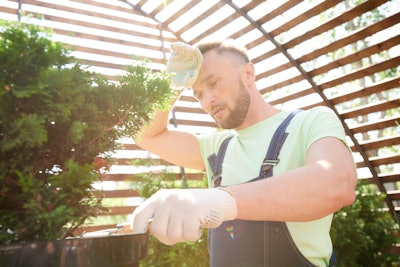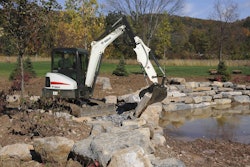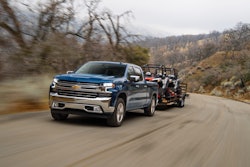
There are several heat-related illnesses your employees can encounter, including heat cramps, heat exhaustion and heat stroke. In your efforts to keep your staff cool, you may have heard of cooling towels or seen them used by athletes.
So, the question is, are they effective and should you include them in your summer personal protective equipment?
Do cooling towels work?
Cooling towels are designed to help workers regulate their body temperatures. They are typically placed on the neck and shoulders, but they can be placed anywhere on the body that needs cooling.
The towels cool the body through evaporative cooling. They direct heat away from the body, just like sweating does.
To use one, the towel should be placed in cold water, and then rung out so it is not dripping. The temperature difference between the towel and the user will cause the heat to transfer to the towel and the heat is lost via evaporation.
Yet this evaporative cooling is only effective in low to medium humidity environments since the rate of evaporation is faster in drier air.
“In humid environments, the towel will still absorb heat from the body, but since the air is saturated with humidity, the water from the towel will not evaporate, effectively storing the heat,” writes Safeopedia. “So, the cooling effect will be short lived. In these environments, you will have to soak the towels in cold water more frequently to ‘recharge’ it when it warms or dries up.”
There are many versions of cooling towels, with some as bandanas or wraps, but it all comes down to the same principle.
Consumer Reports even compared two cooling towel brands versus a regular smooth-weave dish towel and found that they all cooled to within one to two degrees of each other over multiple tests at various temperatures and humidity.
“People have been doing this for millennia,” Pat Slaven, a textile expert, tells Consumer Reports. “It’s not new. It’s science.”
Long story short, cooling towels do help cool people down on a hot day given the humidity is low, but you don’t necessarily have to invest in a particular brand for it to work. Any towel will do the job.
Tried and true methods
If cooling towels seem too gimmicky for your taste, there are a number of more traditional methods you can implement that will ensure your landscaping crews are safe over the summer.
One option that many landscaping companies take advantage of is scheduling work to take place earlier in the day. Starting early allows crews to call it quits later on if the day becomes too hot to safely work. The coolest part of the day is between 6 a.m. and 10 a.m.
Encourage your crew members to stay hydrated and take breaks as necessary. By having a company culture that doesn’t shame a worker when they need to rest for a bit in the shade, you can ensure your employees feel comfortable to take care of themselves.
Providing plenty of water at the jobsite will also make it more likely they’ll stop to get a drink when they need it. Checking in on crews and encouraging supervisors to remind individuals to get a drink every once in a while, can help with hydration levels, as thirst is not always the best indicator.
Lightweight, light-colored employee uniforms can also minimize the effects of heat.
Acclimation is one critical element of protecting workers in the heat. It generally takes five days of working at least 1½ hours per day for the body to become acclimated to higher temperatures. Try to schedule less demanding tasks during heat waves and know when to call it a day if things simply become too hot.
This will vary based on your location and the job at hand, but a good rule of thumb is to monitor the heat index.
If the heat index is between 91 and 103 degrees Fahrenheit there is a moderate risk level. If the heat index is between 103 and 115 degrees Fahrenheit, there is a high risk for heat-related illnesses. A heat index greater than 115 degrees Fahrenheit has an extreme risk of heat-related illnesses.
At the end of the day, it is still the employer’s duty to protect workers from heat hazards so make sure everyone knows how to recognize early signs of heat stress.
If it’s extremely hot outside and a co-worker seems disoriented, call 911 immediately because they may be suffering a heat stroke. While you’re waiting for paramedics to get to the scene, attempt to move the co-worker to a cooler area, remove any unnecessary clothing, provide drinking water and turn on a fan in their direction, or mist them with water.









